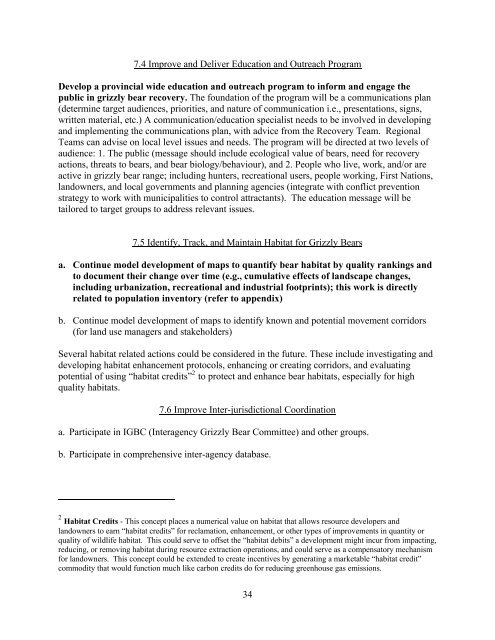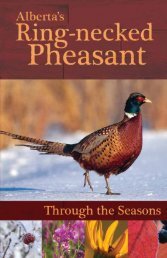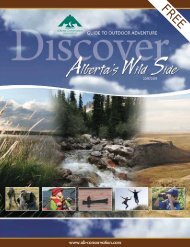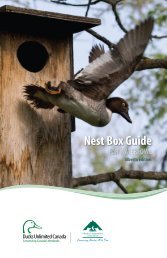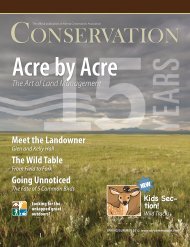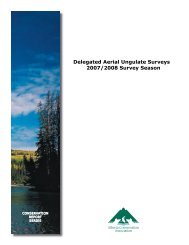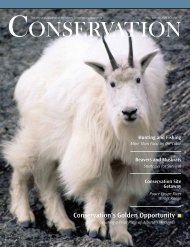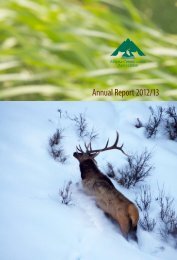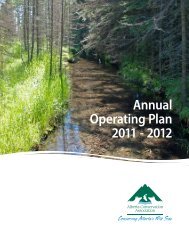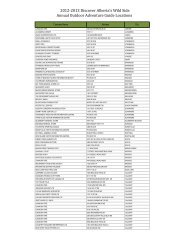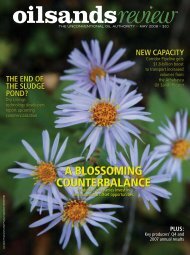Alberta Grizzly Bear Recovery Plan 2008-2013 - Alberta Sustainable ...
Alberta Grizzly Bear Recovery Plan 2008-2013 - Alberta Sustainable ...
Alberta Grizzly Bear Recovery Plan 2008-2013 - Alberta Sustainable ...
Create successful ePaper yourself
Turn your PDF publications into a flip-book with our unique Google optimized e-Paper software.
7.4 Improve and Deliver Education and Outreach Program<br />
Develop a provincial wide education and outreach program to inform and engage the<br />
public in grizzly bear recovery. The foundation of the program will be a communications plan<br />
(determine target audiences, priorities, and nature of communication i.e., presentations, signs,<br />
written material, etc.) A communication/education specialist needs to be involved in developing<br />
and implementing the communications plan, with advice from the <strong>Recovery</strong> Team. Regional<br />
Teams can advise on local level issues and needs. The program will be directed at two levels of<br />
audience: 1. The public (message should include ecological value of bears, need for recovery<br />
actions, threats to bears, and bear biology/behaviour), and 2. People who live, work, and/or are<br />
active in grizzly bear range; including hunters, recreational users, people working, First Nations,<br />
landowners, and local governments and planning agencies (integrate with conflict prevention<br />
strategy to work with municipalities to control attractants). The education message will be<br />
tailored to target groups to address relevant issues.<br />
7.5 Identify, Track, and Maintain Habitat for <strong>Grizzly</strong> <strong>Bear</strong>s<br />
a. Continue model development of maps to quantify bear habitat by quality rankings and<br />
to document their change over time (e.g., cumulative effects of landscape changes,<br />
including urbanization, recreational and industrial footprints); this work is directly<br />
related to population inventory (refer to appendix)<br />
b. Continue model development of maps to identify known and potential movement corridors<br />
(for land use managers and stakeholders)<br />
Several habitat related actions could be considered in the future. These include investigating and<br />
developing habitat enhancement protocols, enhancing or creating corridors, and evaluating<br />
potential of using “habitat credits” 2 to protect and enhance bear habitats, especially for high<br />
quality habitats.<br />
7.6 Improve Inter-jurisdictional Coordination<br />
a. Participate in IGBC (Interagency <strong>Grizzly</strong> <strong>Bear</strong> Committee) and other groups.<br />
b. Participate in comprehensive inter-agency database.<br />
2 Habitat Credits - This concept places a numerical value on habitat that allows resource developers and<br />
landowners to earn “habitat credits” for reclamation, enhancement, or other types of improvements in quantity or<br />
quality of wildlife habitat. This could serve to offset the “habitat debits” a development might incur from impacting,<br />
reducing, or removing habitat during resource extraction operations, and could serve as a compensatory mechanism<br />
for landowners. This concept could be extended to create incentives by generating a marketable “habitat credit”<br />
commodity that would function much like carbon credits do for reducing greenhouse gas emissions.<br />
34


